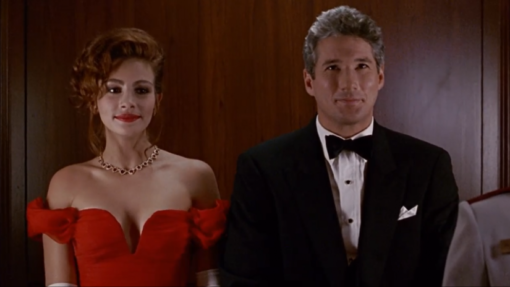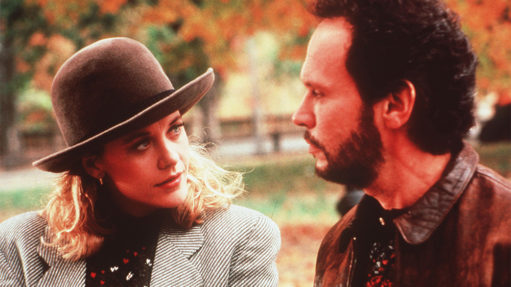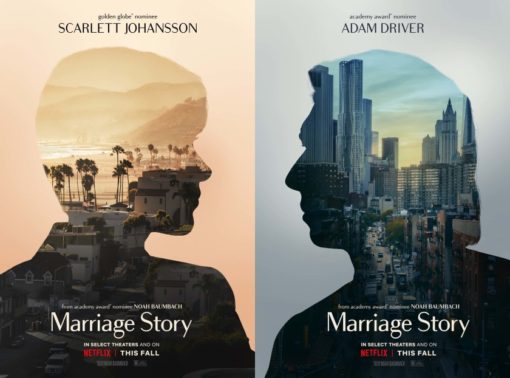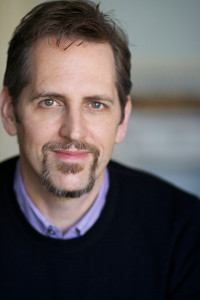I found Marriage Story to be a devastatingly emotional portrait of a couple going through a divorce, where we like both of them, and can see both of their perspectives as they navigate a huge life change and legal conflict with someone they have loved deeply. It’s a great example of the challenges of writing a dual narrative.
Most movies have a single main character, where we experience everything from their perspective — and every scene is about their progress toward a big overall problem/goal. We may get to know other characters (and certainly the writer needs to really know all of them), but we typically don’t follow them in separate scenes away from the main character where they pursue what they want.
The main exception to this would be “ensemble movies” that have multiple stories, each with its own main character, interwoven throughout. These are relatively rare in film, but super common in television, In fact, almost every series takes this approach, in every episode — following several different people and their stories from scene to scene, rather than a single main character.
This question of “point-of-view” is a key one in any script. Ideally at every given moment, we’re in a particular character’s perspective, relating to them and understanding what they’re going through as they pursue their hard-to-reach desires. The audience will tend to identify with someone in such a situation: actively struggling in some way, in pain, wanting something they can’t have, and battling to get it. And they need someone in that situation in every scene, grappling with meaningful conflict, in order to be engaged. That character becomes their “way in” to that dramatic beat.
But we can’t just jump willy-nilly from character to character in our scenes. We need to take the time to get the audience initially emotionally invested in a main character, and then stay with them on a coherent journey in pursuit of their wants, where their situation evolves over the course of its telling — changing and building from scene to scene. That, to me, is what a “story” is.
What we often see in this kind of movie are three stories actually: each member of the couple has their own personal problem/goal, and we also track the status of the relationship itself. We interweave all three of these, and are invested in a certain outcome for each.
For instance, in Pretty Woman, we get that Julia Roberts has a tenuous unpleasant existence as a street prostitute, that we (and she) would like to see resolved. And we experience Richard Gere as unhappy in his personal life, lacking fulfillment and connection despite his wealth. Finally, and most importantly, we want the two of them to end up together. There is a lot in the way of all three of these things. And they are each kept “in the air” from scene to scene.

As a writer, I think it’s important to know “whose story” you’re in, in any given scene, at any given moment. In other words, whose pain are we focused on? Whose unfulfilled desire? Whose strong emotions, as the thing they want is at stake and they’re actively facing conflicts of some kind?
It’s pretty obvious whose story we’re in if it’s a separate scene about only one of the two characters — like when Julia Roberts is rebuffed by the sales ladies on Rodeo Drive. But what about scenes where both members of the couple are together?
Even in these, if you look closely, it’s often more about one person’s problem and emotions than the other. Such as near the end (SPOILER alert) when Richard Gere offers to put her up in a condo and she has to turn it down. He says “I never treated you like a prostitute” and she says, “You just did.” In these moments, we’re definitely feeling her pain and focused on her personal story more than his.
When Harry Met Sally… also has “three stories” in this way, but rather than giving the two leads separate life concerns like “the hard life of a prostitute” or “a billionaire who lacks meaning and connection,” both of their problems are about their love lives, and finding the right person. Each gets separate moments where that issue is explored, separate from the other. But when they’re together, the scenes tend to feel like they’re equally focused on both of them. There’s no power imbalance or other life concern at stake. We relate to both of them as being in kind of an equivalent situation. And whether it’s pain for one of them over another relationship not working out, or learning about the other’s dating situation, or, ultimately (SPOILER alert), navigating the dicey waters post-sex with each other, we kind of explore both their perspectives at the same time.

Marriage Story takes this to a whole other level. While it also has separate scenes for both Scarlett Johansson and Adam Driver, it does something unusual, that’s trickier to pull off. It makes each of them essentially the other’s antagonist — where his main personal goal is in direct opposition to hers (regarding the outcome of their divorce and custody arrangement with their son). So it seems like one will win, and the other will lose. Unlike the two rom-coms mentioned above, where we can kind of “root for” all three stories, and a happy ending includes a “win” for all of them, with this approach, we feel that for one to get what they want personally, the other must lose. And that creates challenges for point-of-view.
We’re essentially asked to kind of root for the wife in one scene, but in the very next scene, we’re asked to root for the husband, who is totally against her goal and trying to stop it from being reached. We kind of want them both to get what they want, but that can’t really happen, and so we veer back and forth in terms of whose side we’re on in the moment. We might lose the thread of the wife’s point-of-view on the situation (and her desires) for a time while we’re with the husband reacting to what she has done, which temporary place him in “hero” mode (the one we’re connected with) and her in “villain” mode. And then we switch back and do the reverse.
As such, Marriage Story is pretty non-traditional, almost more of a “portrait of a divorce” from both perspectives, than a traditional movie story. And in terms of the “third story” of their relationship, it’s not really a question of will they end up together but just whether they’ll survive divorce and find a decent way to be with each other. It bears some resemblance, I think, to “one-act films” (to use Robert McKee’s phrase) like Lady Bird and The Florida Project, a subject I’ve written about before. The characters and their situations definitely go through a big change from beginning to end, but it’s not quite as focused on following a character taking action to try to reach a goal we fully root for, and how those actions complicate and build the problem, causing them to react and have to regroup.
It’s more that one character takes action, then we go to the other character’s perspective and see how that action affects them. Other non-traditional elements include sometimes not being with a character when they take a key action (like hiring a new lawyer), because we’re seeing/learning that from the other character’s perspective. We also don’t track every scene in terms of a cause-and-effect process, seeing how it affects things moving forward. One example of this (SPOILER alert) is the great custody evaluation scene at Adam Driver’s apartment, which doesn’t seem to lead to any particular result, despite the high stakes that it’s set up as having. We simply cut to a later time where its results apparently didn’t have a huge effect that we can measure.
So we have a portrait of a couple going through a divorce, complete with all the most painful, believable, detailed, specific, heart-breaking aspects — which feel like they’re clearly inspired by writer-director Noah Baumbach’s real life, and/or a lot of research. (I think it was both.) And that’s especially important in this sort of less traditional (and less “feel-good”) film. It must have a stirring authenticity, where the audience gets so caught up in the people and their pain, especially, and it all feels so real, that they feel like they’re living their lives with them, where each moment (or as many moments as possible) sparkle with a sense of truth and emotional realness. Not easy to do. It’s the kind of story you also more often find in an independent movie the writer is directing, rather than a script one would try to sell.
I do highly recommend it. I also recommend analyzing point-of-view in everything you watch, in order to really understand and master this elusive concept, which is so vital go getting readers and audiences invested in one’s work.



I have a feature script that is exactly this, and when I pitch one of the first questions I get asked is; whose POV is this from / who is the hero? When I explain it follows two main characters, I can almost feel the person shutting off to the idea. Why is this concept so hard for some people to wrap their head around? In real life, each person is the hero of their own story from their own POV, and I find it far more interesting to be able to root for more than one main character, than to to blindly follow the plot from one perspective. Oy vey.
I think the issue is that people who evaluate screenplays professionally are used to seeing scripts that don’t have really solid subjective POV and kind of move from character to character without getting the audience invested in any of them. (Not that the writer does this intentionally, but it’s harder than most writers think to create that investment and it’s one of the biggest reasons scripts don’t work.) Since most successful scripts have a single main character, when they hear that a script doesn’t, they imagine that the POV is going to be “fuzzy” in this way, as opposed to having multiple intertwined stories where the audience gets invested in each of the separate “main characters,” which is hard to pull off and rarely seen in scripts from writers who aren’t already well-established.
The fact that so many movies (especially in recent years) are focused on one character is a construct invented by gurus, blindly followed by certain producers who impose it via those questionnaires they make their readers fill out: “From whose POV is the movie told?” is everything experienced through their POV?,” etc;, and if a script fails this “criteria” – PASS. So it’s come to be accepted as a golden rule.
But besides the 3 films you mention, whose story is “Thelma and Louise”? “Butch Cassidy and the Sundance Kid”? Withnail and I”? “The Blues Brothers”? The Harold and Kumar films? All those old Jerry Lewis and Dean Martin films? “The Heat”? And surely a hundred others. Thank heavens a few producers ignore the gurus. It’s impoverishing, and inane.
I see it a bit differently. I think most successful scripts historically do have a single main character, but of course there are exceptions. To me, POV is an all-important issue that writers tend to not easily master. It’s a very common issue where scripts aren’t experienced by the reader subjectively through any one character’s POV, and it’s far more common to see a script from a not-yet-established writer with no compelling POV as opposed to one, let alone multiple, compelling POV’s.
Scripts about duos like you mention tend to follow what I outlined above, in terms of having separate personal stories for each of the two main characters, and possibly a third story that is about their relationship, or about their shared mission, or possibly both.
I think the key lies in identifying what your story or stories are and who is the main character of each one — while recognizing that a “story” is almost always from the perspective of one character who the audience really identifies with and experiences it through. Having said that, in “relationship” stories, the fate of the relationship can feel like its own separate story, and sometimes more than one character can share the main character duties as a team if they have a mission they work on together that the audience really cares about. (But in such stories, you usually also have one or more personal stories for a particular character, intertwined with that.)
I’m reminded of Crash, an ensemble Oscar winner of yesteryear. Wow, 2004, I think. It somehow succeeded despite its episodic nature and multiple points of view.
To me “impoverishing” is the right word for the current trend.The poignancy and power of Crash’s theme arose from its treatment of multiple POV’s. They were stitched together to make a memorable whole. It wouldn’t have been nearly as effective otherwise.
I never felt confused and whipsawed by the multiple POV’s either because Crash’s tapestry became more than its threads. They interleaved, complemented and enriched each other.
Crash resonated with most audiences then. Would it flop now because of assumptions about diminished attention span or excessive POV’s?
Yes, I would say Crash is a classic version of an ensemble approach where you have multiple stories, each with a different main character, interwoven. SAVE THE CAT GOES TO THE MOVIES calls this the “Issue Institution” subgenre of the “Institutionalized” genre. I don’t personally think that this kind of movie has fallen out of favor exactly, or that most industry readers would have a problem with a script told with an ensemble approach like this, if it works. I do think these are a bit harder to write, but as I’ve said elsewhere, virtually every episode of television uses this approach. The average episode of Downton Abbey, for instance (and the movie) might have over ten stories interwoven.
Great stuff. Thanks Eric. I’m doing this in my newest piece in showing the POVs of a struggling actress with no money currency caregiving for a rich executive with no heart currency and a waning memory. Ultimately they reverse POVs benefitting from each other’s strengths.
Thanks for the positive comment Margaret! I hope the post helps with that…